A Dance Pageant
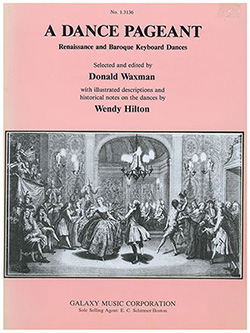
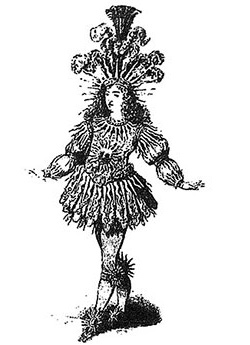
Louis XIV as Apollo, the sun god. The king was a fine dancer and often performed with professional dancers at the court.
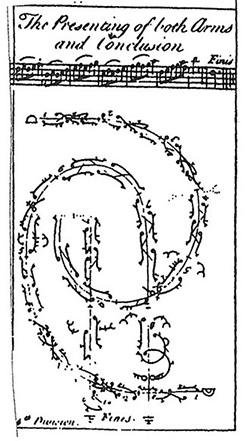
Baroque dancing masters devised a way to notate the steps and movements of each of the dances. The decoding of these complex diagrams enabled historians to recreate dances like the minuet, shown above.
Co-edited by
DONALD WAXMAN
and
WENDY HILTON
and
WENDY HILTON
A Collection of baroque and late renaissance keyboard dances with
detailed descriptions of how each of the forms were danced in the
17th and 18th centuries, A Dance Pageant is unique in demonstrating
how to perform these keyboard dances in ways that relate directly to
the steps and choreographies of the original dances. Fully with illustrated
period drawings and reproductions of the Baroque dance notations.
This superb collection should be in the hands of every pianist from the intermediate up. To every student about to study his first Baroque dance, to every student in a college literature course, to every teacher and to everyone who plays for pleasure, A Dance Pageant offers insight, guidance and sheer delight.
...Bradford Gowan, Piano and Keyboard Magazine
CONTENTS
Courantes by BYRD, CHAMBONNIERES, FRESCOBALDI, BACH, and HANDELMinuets and Passepieds by PURCELL, LE ROUX, RAMEAU, HANDEL and BACH
Gavottes by CORELLI, PERGOLESI, COUPERIN and BACH
Bourées and Rigaudons by PURCELL, FISCHER, DAQUIN and BACH
Sarabands by PACHELBEL, LE ROUX, ZIPOLI and BACH
Gigues by BULL, RAMEAU, HANDEL and J.S.BACH
Allemandes by JOHNSON, BULL, HANDEL and J. S. BACH
Pavanes by CABEZON, FARNABY and BYRD
Galliards and Voltas by FARNABY, BYRD
HIGHLIGHTS
...Playing the Minuet as it was danced in the Baroque courts – in a
pattern that moved over two measures, without any stress on the
downbeat of the 2nd measure.
...The two Courantes – the fast Courante in 3/4 time and the slower Courante, notated and danced to a complex alternation of 6/4 and 3/2.
...Stressing the 2nd beats in playing the Saraband, just as the court dancers did either by gliding into the 2nd beat of the music or coming to a complete pause on it.
...Why is the opening of most Gavottes notated on the half measure although the music sounds as though it begins on a strong downbeat? The answer lies in the unique interplay between the music and the dance.
..The Bourrée and the Rigaudon – How to interpret these joyous, springy dances which inspired Baroque composers to write some of their most melodic dance music.
...The two Gigues – the importance in distinguishing between the purely instrumental Gigue, such as the fast, brilliant final movements of the Bach orchestral and keyboard suites, and the slower Gigue that was danced at the French court.
...…Why the Allemande in the Baroque keyboard suites is not a dance - plus descriptions of the Renaissance dances Pavane, Volta and Galliard.
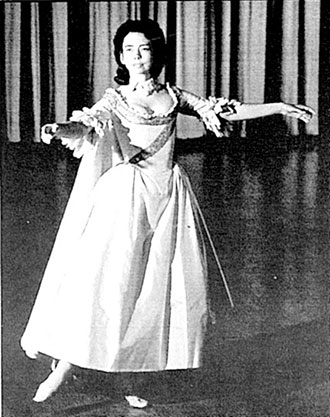
Wendy Hilton, Baroque dancer, teacher and
early dance specialist. Her book, Dances of
the Court and Theater, is the standard text for
dancers working to recreate the 17th and 18th
century dance forms. Ms. Hilton taught Baroque
dance for many years at the Juilliard School.

The dancers are about to join hands in the final figure of the minuet.
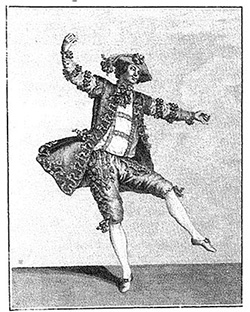
A professional dancer of the period, probably dancing a Bourdée or Rigaudan.